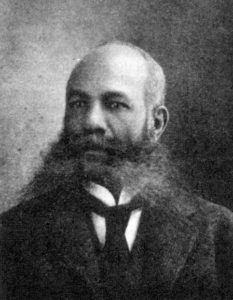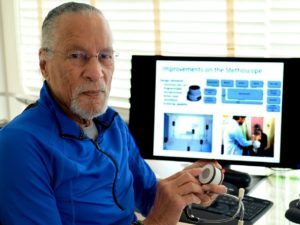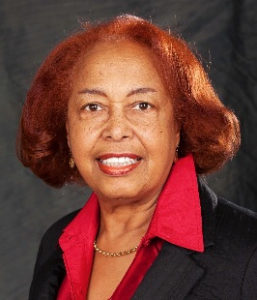Feb
13
7 Black Americans and Their Life-Changing Inventions
I was reminded the other day that this is Black History Month. I don’t normally go out of my way to note, let alone celebrate, this. As Ryan Bomberger (who is bi-racial) of the Radiance Foundation recently wrote,
“There are so many incredible stories that should be intertwined in an educational fabric that celebrates every thread from every hue of trailblazer. But we shouldn’t have separate months to teach fractured history based on color or gender. It’s all American history.”
I agree. However, this year I decided to highlight the contributions of a few lesser-known American inventors who happen(ed) to be black, in order to give some well-deserved recognition. There was no law prohibiting a Black inventor from getting a U.S. patent, even back in the early 19th century. But, you can imagine the difficulties, both pre- and post-Civil War. It is only fitting, then, that we begin where we do…

Thomas L. Jennings was born into a free African-American family in 1791. This meant that a) he was a citizen, and b) no slaveowner could claim ownership of Jennings’ intellectual property. He worked as a tailor and businessman in New York City. In 1820 he applied for a patent (granted in 1821) for a dry-cleaning process he developed. His “dry-scouring” method was a safer way to clean delicate clothing. His subsequent earnings from his invention and his popular and successful business allowed him to support abolitionist causes and possibly free members of his own, extended family that were enslaved.
Elijah McCoy was born free in Canada (his parents having escaped from Kentucky via the Underground Railroad) but later moved and became a U.S. citizen. He worked as an oiler and fireman for the railroad, but at home he was always developing new stuff in his machine shop. In 1874, he was granted a patent for a portable ironing board, which he initially developed to help out his wife. This was just one of McCoy’s 57 patents over a lifetime of inventing. Most of them dealt with the lubrication of steam engines, but one was for the lawn sprinkler!

In the early days of elevators, people had to shut both the shaft and elevator doors manually before riding. (You may have seen such primitive elevators in old buildings, possibly in movies or on TV.) It was dangerous, and sometimes people got hurt. Alexander Miles’ daughter almost fell down an elevator shaft, so he decided to do something about it. In 1887, he patented his mechanism for automatically opening and closing elevator shaft doors.
Frederick McKinley Jones, who had suffered a difficult childhood, found his calling as a self-taught mechanical and electrical engineer. In the 1930s, he invented a roof-mounted cooling system to refrigerate goods on trucks during extended transportation, thereby eliminating the need to pack such goods in ice. He received a patent for the system in 1940 and proceeded to co-found the successful U.S. Thermo Control Company (later renamed Thermo King). Refrigerated trucks also helped preserve blood, food, etc., during WWII and beyond. Jones would go on to receive 60+ patents over his lifetime. In 1991, he became the first Black American to be (posthumously) awarded the National Medal of Technology.

While working as an acoustical scientist for Bell Labs in the early 1960s, James E. West was assigned the task of developing an inexpensive yet highly-sensitive, compact microphone. By 1962, West and Gerhard Sessler had co-invented their new foil electret microphone, a competitor to the more expensive condenser mics. They received a patent in 1964, and by 1968 it had become the new industry standard. Ninety percent of all microphones made now — from baby monitors to hearing aids to telephones — use their electret tech. Now a professor at Johns Hopkins University, West holds over 250 foreign and U.S. patents for microphone design and polymer foil electret technology. He was also given an honorary doctorate from NJIT in 2007 and has received multiple honors and awards in his field.
In the 1960s, Mary (or Marie) Van Brittan Brown lived in a crime-ridden area of Queens, New York, where she didn’t feel safe, especially when her husband wasn’t at home. The ingenious nurse then designed a home security system for herself! With the help of her husband Albert, an electronics technician, she installed a motorized camera that could view & record through four different peepholes in their front door, with a live feed to a TV monitor inside. She then added a two-way microphone to speak with visitors in the outside hallway, along with a panic button to notify police if she felt in danger. That was 1966. She and her husband filed for a patent and finally got it in Dec. 1969. The Browns’ invention serves as an early model for today’s closed-circuit TV and home security systems. (Fun fact: Their daughter also became a nurse and inventor.)

Dr. Patricia Bath’s earliest notable medical research — while still in high school! — was on cancer. But, Bath is most noted for her work on cataracts and blindness, as well as for her humanitarian work in this and related areas. In the early 1970s, she became the first African American (or Caribbean American?) to complete a residency in ophthalmology (at NYU). Among her many accomplishments, she was appointed assistant chief of the King-Drew-UCLA Ophthalmology Residency Program in 1974; became chief in 1983. She co-founded the American Institute for the Prevention of Blindness in 1976. In 1988, Bath became the first female African American medical doctor to receive a medical patent for her laser cataract treatment device (Laserphaco Probe), which she actually invented a couple years earlier. At the time of her death in 2019, Bath held five U.S. patents for the ablation and removal of cataracts, as well as multiple honors and awards.
Very cool! (Especially that Jones guy.)















